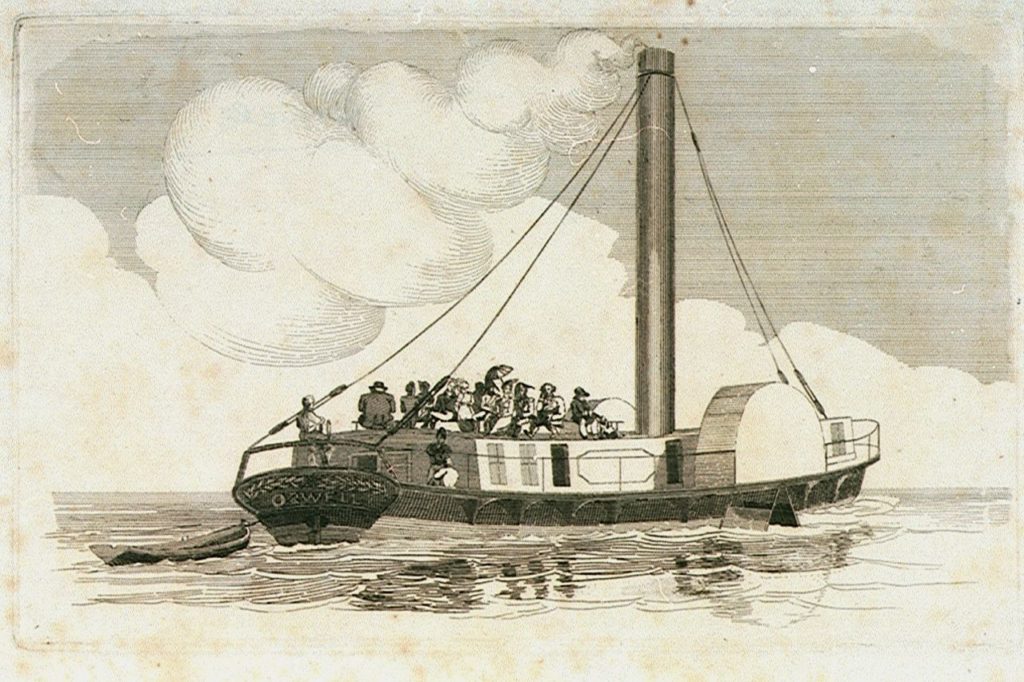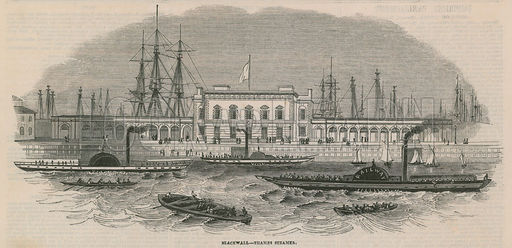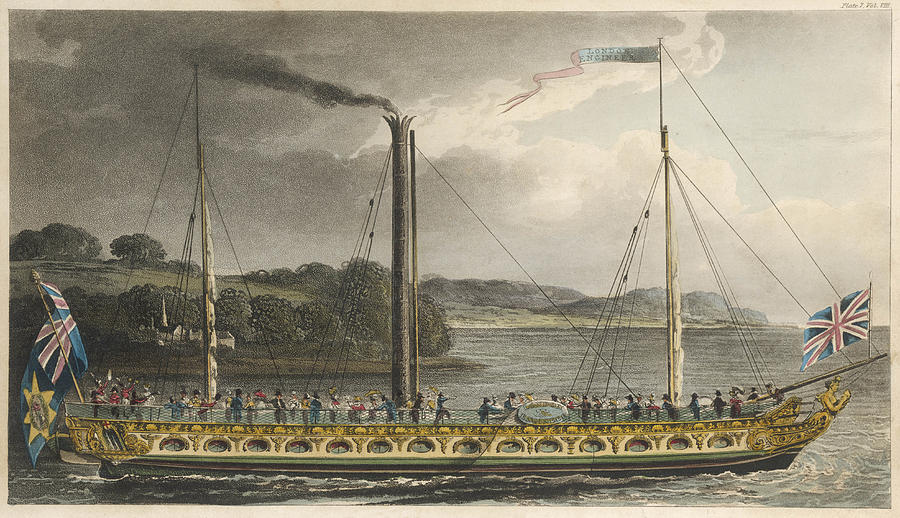
Steam ship “Orwell” from 1815
Following the Georgian invention of the steam engine, entrepreneurial Brits were keen to put it to work in a variety of applications and conveyances. There were many trial runs in the early 1800s in rivers all over Great Britain. The first steam vessel to go on the Thames was the Marjory in 1814 (Steam-ships: The Story of Their Development to the Present Day, 1910). There is some debate as to the first steam vessel built on the Thames. Wikipedia suggests the first steam passenger boat built on the Thames, the Regent, was put into service in 1816 from Margate and served as a mail boat. Another suggestion is that the 1815 built Defiance was the first, although there are also some thought she may have been built as a sailer then retrofitted with engines (Steam-ships: The Story of Their Development to the Present Day, 1910).
The Regent ran between London and Margate, and was burned with no causalities in 1817 off Whitstable (Steam-ships: The Story of Their Development to the Present Day, 1910). These early ventures with steam engines were precarious, and there was much tinkering with a variety of safety features. A first hand account of the Regent‘s creator details the precarious invention:
An Historical and Explanatory Dissertation on Steam-engines..., 1818
Steamers could undoubtedly carry more passengers than the sailing or row boat passenger packets. The safety after several accidents, including the Regent fire, prompted the creating of the Steamboat Act of 1819 which required all passenger steam vessels to register and be annually inspected by an engineer. The technology would continue to improve, due to demand, until these steam boats would become ubiquitous on the Thames.












